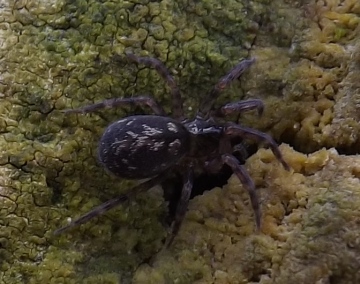Summary for Dicymbium brevisetosum
|
National Distribution
Terms of Use. Double-click on map to go to region

Explore Regional Distribution
Please log on and add a note on this species
About this species
Recorded altitude range
Species text
DistributionThe distribution map is based on all records submitted to the recording scheme as D. brevisetosum. Note that since Roberts (1987) did not consider D. brevisetosum as a separate species, some recorders may have ignored it, and females are not distinguishable from D. nigrum in any case. The species appears to have a patchy distribution and to be absent from large parts of southern England and Wales as well as areas of Scotland. It has been recorded from France, Germany, Holland, Ireland and Sweden.
Habitat and ecology
The spider has been found in a variety of grassland habitats as well as marshes and blanket bog. In Essex the species has a very localised distribution almost completely confined to the south-west of the county, whereas D. nigrum is widely distributed across the whole county. Males have been recorded almost throughout the year, but mostly in the autumn. The limited female data are based on an association with males collected on the same occasion.
Status
Originally described as a subspecies of D. nigrum by Locket (1962) based on differences in the hairs and spines on tibiae I and II of males. It was elevated to full species status by Locket et al. (1974) based on the fact that the two forms do not occur together, but whilst Roberts (1987) regarded it as a subspecies, Merrett & Murphy (2000) continue to treat it as a separate species. There are no apparent differences between the genitalia of either species and females appear to be indistinguishable from D. nigrum.
Original authors of profile: D.R. Nellist and P.R. Harvey
Text based on Harvey, P.R., Nellist, D.R. & Telfer, M.G. (eds) 2002. Provisional atlas of British spiders (Arachnida, Araneae), Volumes 1 & 2. Huntingdon: Biological Records Centre. References
Adult Season
Habitats
background methodology
Recorded management for locations with Dicymbium brevisetosum
Recorded substrate and hydrology for locations with Dicymbium brevisetosum
Images
sorry, no pictures available for this species yet - if you have an image please log on and upload it
See also A-Z Species Index - A-Z Picture Index - |